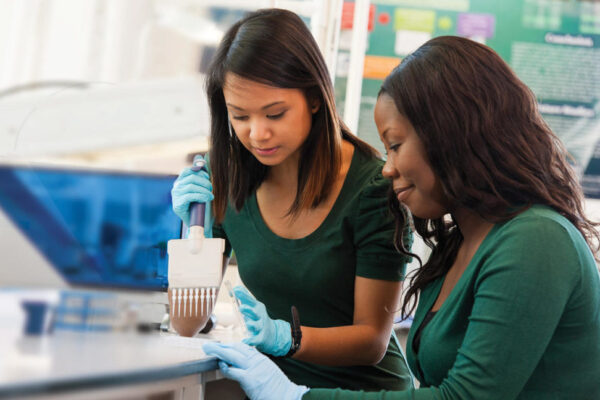By Louis Soares and Burck Smith
You know the familiar logic: Higher education is countercyclical. When everything else is contracting, colleges and universities are booming as Americans who would otherwise be working head to college. What is not as universally acknowledged is that while more students show up, not enough make it through. In the last recession, outcomes dipped, especially for students who were previously in the workforce.
Even in the best of times, higher education has to work hard to support students who are older than 24, working, parenting, or all of the above. Pre-COVID-19, students who combined work and caregiver obligations with education, so-called “post-traditional” learners, represented about 60 percent of all undergraduates, but their outcomes were generally worse than “traditional” students.
As we move from recession through recovery, we can expect a surge in demand for higher education that will disproportionately come from post-traditional students who are newly unemployed or underemployed and possibly by a decline of traditional-aged students scared away by an uncertain fall. To respond, colleges and universities must swiftly adapt by broadening their view of learning, adopting competency-driven approaches, providing lower-cost and lower-risk on-ramps, and creating partnerships with employers. Fortunately, the growth in online learning programs and courses offered by colleges and non-college providers over the last decade creates a range of options and solutions that were not previously available.
During the Great Recession of 2008, millions of unemployed or underemployed Americans turned to higher education to better prepare themselves to enter or return to the workforce. There were about 2.1 million more enrollments driven by the recession than otherwise expected.
The results were mixed. The six-year completion rate dropped more than 3 percentage points, bottoming out at just under 53 percent. The impact was greatest for non-traditional students: Students aged 20-24 saw a decline of more than 7 percentage points in graduation rates from 2007 to 2009, while adults ages 25 and older saw a more than 4-point drop. Lower completion rates, coupled with increased borrowing, only increased the number of people with student debt and no credential, the worst outcome of all.
These results are worrisome. But the 2020 recession need not have the same results. Unlike 2008 and even before the recent nationwide pivot to remote learning, more than a third of students already took at least one online course. Further, whether public, nonprofit, or for-profit, the last decade has seen the emergence of large adult-serving online colleges that are well positioned to seamlessly deliver coursework as well as non-college providers that provide coursework on a low-cost and low-risk subscription basis in partnership with colleges and even under their own brands. And employers have begun to have a stronger voice in higher education delivery by offering tuition assistance and partnering with adult-serving colleges and new providers. Past student outcomes need not be prologue.
Among the practices that can help shape college and university adaptation and promote stronger student outcomes in the post-pandemic economy:
Ensure learning continuity by acknowledging knowledge, skills, and abilities wherever and whenever obtained. As the recession and recovery require more adult workers to blend work and higher education, our nation needs more models that accept credit for transfer courses and recognize and certify learning that happens outside of formal education, such as through prior learning assessments (PLAs). Pathways that incorporate PLAs are particularly powerful when they also incorporate self-pacing for learning new skills. A common trait of the best-known adult-serving institutions such as Western Governors University, University of Maryland Global Campus, CSU-Global, and Excelsior is the willingness to recognize credit for PLA and non-college coursework. ACE’s College Credit Recommendation Service (CREDIT®) and military workplace learning evaluations support the scaled use of such practices. Just last month, higher education community leaders released a set of principles for easing the transfer of learning across institutions in this time of crisis.
Promote self-directed learning, but with high support. Even before the COVID-19 crisis, students had an increasing need for education that allowed them to work at their own pace. The expansion of competency-based education allows students to move quickly when they can and slow down but still progress when their time is more constrained. We also need models, such as subscription-based education, that start any time, enabling students to move seamlessly in and out of education and take breaks when needed, but not treating them (or penalizing the institution) as if they are dropouts. At StraighterLine, nearly a quarter of daily enrollments are “re-enrollments”—students who paused their subscription and are returning to their education. Such a pause at a traditional college would be a dropout, resulting in forfeited tuition, complications with Title IV eligibility, and a black mark on a transcript.
Develop pricing and models that create lower barriers to student entry. With state budgets likely depleted, a growing recognition that $14.5 billion of stimulus funding is not enough, and students dealing with a historically bad recession, affordability will be more important than ever this fall. Too often, price and cost create unnecessary barriers and add a significant amount of risk. We must deploy pricing models that lower the risk for students to “try out” higher education before fully committing. Programs like BYU-Pathway which require students to earn a low-price, college credit-bearing credential prior to admission, and WGU Academy, which charges a low monthly subscription for credit-bearing math, writing, and student success coursework, take this approach. Launching this month, the Community College of Denver will create a low-priced subscription pathway for returning students with some college and no degree to complete needed general education courses. Results show a greater number of students enroll after the program—many of whom might otherwise be turned away. They also have greater persistence than their peers.
Learning that combines foundational knowledge with college-level and work-ready skills. Today’s learners, particularly working-age adults, need options that allow them to quickly move to credit-bearing coursework that advances them toward a meaningful credential and develops work-relevant skills. They cannot afford to spend months or years doing developmental or foundational work that is unconnected to a career. This is especially true now. Models that combine foundational knowledge with college-level work and career skills are particularly promising. Virginia’s G3 program—Get Skilled, Get a Job, Give Back—for its community colleges takes this approach to helping upskill the workforce and fill high-demand jobs.
Deep partnerships with employers. Credentials and learning matter, but for the vast majority of students, the ultimate goal is a good job and career. Deep partnerships with employers are critical, especially in a job market in upheaval. Third-party providers, like Bright Horizons’ EdAssist, play an important role in brokering relationships between employers and educational providers, smoothing the process for employers and employees alike and further lowering the risk of entry for students. Indeed, free to current and furloughed employees, EdAssist and StraighterLine are providing four months of unlimited credit bearing coursework to EdAssist clients that will count for credit at participating colleges under their Rapid Reskilling Program.
Over 100 years ago, the Spanish flu dramatically changed the labor market, education, and social institutions in the United States. COVID-19 will similarly reshape how life, work, and education are blended in the coming years.
With openness to innovation, America’s college and universities can be key players in reshaping our society—especially in helping millions of Americans find economic stability and prosperity.
The value of higher education ultimately lies in developing citizens and workers capable of contributing to the nation’s economic growth, individual opportunity, and social mobility. As we navigate this crisis and beyond, this is more important than ever.
If you have any questions or comments about this blog post, please contact us.



